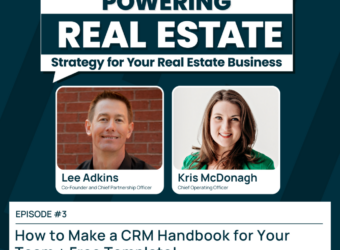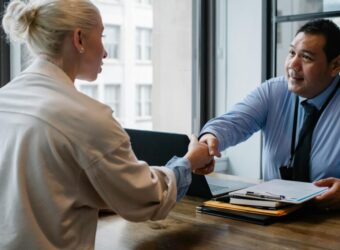Trust is the cornerstone of successful transactions. Whether you’re dealing with first-time homebuyers or seasoned investors, building and maintaining trust is essential for fostering long-term relationships and ensuring smooth transactions. Building trust in real estate transactions is not just about closing deals; it’s about creating lasting relationships based on honesty, integrity, and personalized service. By implementing these strategies, you can enhance your reputation as a trustworthy leader in the real estate industry and foster long-term client loyalty.
🤝 Transparency is Key
Transparency is the foundation of trust. Ensure that all information related to the property, including its condition, history, and any potential issues, is disclosed upfront. This honesty not only prevents future disputes but also shows clients that you prioritize their interests. When in doubt, it’s best to disclose and check with your Broker-In-Charge for guidance.
Try this: Create a comprehensive property file for your clients that includes inspection reports, repair histories, and neighborhood statistics.
🤝 Effective Communication
Clear and consistent communication is vital. Set expectations early and keep your clients informed at every stage of the transaction, from initial inquiries to the final closing. Respond promptly to their questions and provide updates regularly. Remind them regularly of what you just accomplished, what you are doing next, and what comes after that step. This not only keeps them informed, but reassured that you have a plan for what comes next and can tell them what to expect.
Try this: Use multiple communication channels like emails, phone calls, and text messages to cater to your clients’ preferences and ask them at the beginning of the relationship which they prefer.
🤝 Professional Integrity
Your actions and decisions should reflect the highest standards of professional integrity. This includes adhering to legal and ethical guidelines, respecting confidentiality, and avoiding any conflicts of interest. Your word is part of your brand so ensure that if you say you’re going to do something, you follow through every time.
Try this: Regularly review and update your knowledge of industry regulations and ethical standards to ensure compliance. Keep excellent notes within your CRM so that you can ensure you are following through on promises made.
🤝 Personalized Service
Treating each client as an individual rather than a transaction can significantly boost trust. Take time to understand their unique needs and preferences, and tailor your services accordingly. Get to know the real why behind their motivation for buying and selling.
Try this: Learn about your clients’ goals, lifestyle, and future plans to provide personalized advice and solutions. Ask open-ended questions and take notes so that you can refer back to what you discussed so that they know you were actively listening and engaged.
🤝 Building a Strong Online Presence
A strong online presence is also essential for building trust. Ensure that your website, social media profiles, and online reviews accurately represent your brand and services. The potential client reviewing your online presence is regularly part of the process of determining whether or not they want to work with you, so make sure whatever they find assures them that you are experienced, capable, and confident in your ability to work with them as their agent.
Try this: Encourage satisfied clients to leave positive reviews and testimonials on platforms like Google, Zillow, and Yelp. Take a look at your social profiles and website as if you were a consumer and update accordingly. Ask a friend to do a search for you and see what they recommend.
🤝 Continuous Education
Staying informed about the latest local and state regulations, market trends, technologies, and best practices demonstrates your commitment to providing the best possible service. This ongoing education can also help you offer more accurate and valuable advice to your clients. Take this seriously, you have a responsibility as a license holder!
Try this: Attend industry seminars, webinars, and workshops regularly, and consider earning advanced certifications beyond your required CE classes.
🤝 Building Relationships Beyond Transactions
Show your clients that you value them beyond the current transaction. Follow up after the sale, offer assistance with moving vendors, and check in periodically to see how they’re settling into their new home. Someone who just purchased is a future seller so don’t let them fall out of touch with you.
Try this: Send personalized thank-you notes or small gifts to celebrate milestones like the anniversary of their home purchase and stay in touch by offering help with local vendors for home upkeep and repairs as well as local events.

















